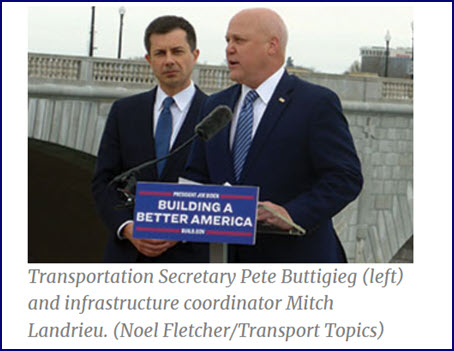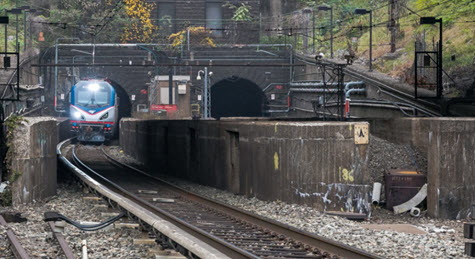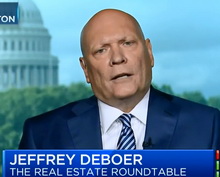
Department of Transportation (DOT) Secretary Pete Buttigieg and White House Infrastructure Coordinator Mitch Landrieu on March 24 announced $2.9 billion in combined funding under a new infrastructure grant program. The new “Multimodal Projects Discretionary Grant” will allow all communities pursuing major transportation infrastructure projects to submit one application for three major DOT funding sources. (DOT Twitter, March 23)
Surface Transportation Funding Expansion
- DOT funds under the new program will be awarded on a competitive basis for surface transportation infrastructure projects that have significant national or regional impact, according to DOT’s March 22 Notice of Funding Opportunity. (Transport Topics, March 24)
- Secretary Buttigieg said he expects to announce winners by the fall after receiving final applications by May 23. (Washington Post, March 23 and DOT Notice of Funding Opportunity)
- Last November, the enactment of the $1.2 trillion Infrastructure Investment and Jobs Act (IIJA) includes more than $350 billion over five fiscal years for surface transportation programs. (DOT news release, Jan. 14)
- White House Infrastructure Chief Landrieu said about half of the IIJA’s $1.2 trillion will flow through the DOT during a presentation earlier this month at a Bipartisan Policy Center virtual forum. (Engineering News-Record, March 9)
- This week, an additional $105 billion for the DOT was included in President Biden’s FY2023 budget request (see story above). The combined funding sources are expected to expand DOT’s discretionary grant programs for large, complex infrastructure projects that may involve more than one state. (DOT FY23 Budget Highlights document)
Gateway Project & IIJA

- A March 28 announcement by DOT Secretary Buttigieg stated that the Administration’s budget recommends $4.45 billion to advance 15 major transit projects in FY2023. “This includes, for the first time, $100 million in recommended funding for the Hudson Tunnel commuter rail project, which is part of the Gateway Program, a series of strategic rail infrastructure investments along the Northeast Corridor.” (Railway Age, March 29 and The Center Square, March 30)
- The Roundtable has long supported federal transportation infrastructure investments to spur economic growth, support local communities and enhance America’s competitiveness. (Roundtable Weekly, Nov. 12, 2021)
- The Roundtable’s 2022 Policy Agenda states, “The IIJA allows $550 billion in new infrastructure investments, estimated to create around 2 million jobs per year over the next decade. This long-term investment in physical infrastructure can re-imagine how we can productively move people, goods, power and information from home to work, business to business, community to community – and building to building.”
A guidebook to IIJA funding programs released on Jan. 31 provides a key tool for states and local governments to apply for federal grants, loans, and public-private partnership resources under more than 375 infrastructure investment programs. (The Hill, Jan. 31 and Roundtable Weekly, Feb. 4)
# # #












